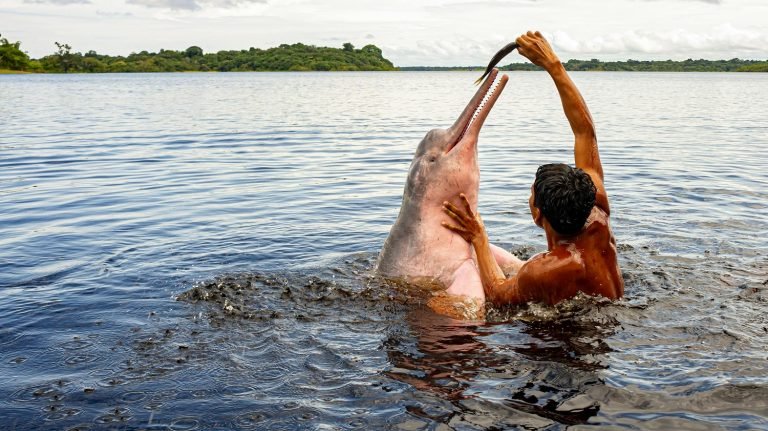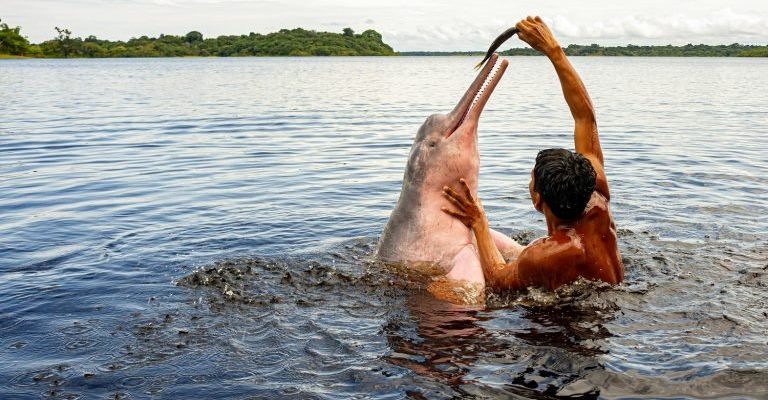
But breeding is not just about finding a mate; it’s about ensuring the survival of their kind in a changing world. In this article, we’re diving deep into the world of Amazon River dolphins to understand their reproductive habits, mating behaviors, gestation periods, and the challenges they face. So grab your favorite coffee, and let’s explore together!
Understanding Amazon River Dolphin Mating Behavior
Mating among Amazon River dolphins is a fascinating process that often leaves observers intrigued. These dolphins are known for their playful nature, and this extends to their courtship rituals too. When it’s time for two dolphins to mate, you might notice a delightful dance of sorts. They swim close to one another, twisting and turning in the water, almost like they’re putting on a show just for each other.
During courtship, males can become quite competitive. They might chase after a female, showcasing their agility and speed in a bid to win her heart. Here’s the thing: these dolphins are known to form temporary bonds, often lasting only through a single breeding season. This keeps things dynamic and allows for a mix of genetic diversity within the population.
Male and Female Roles
In this aquatic world, roles can often be fluid. Male Amazon River dolphins typically take on the role of the initiators during mating seasons. They are known to be quite vocal, using a range of clicks and whistles to attract females. On the other hand, females have the final say, choosing their mates based on the displays they find most impressive. This selective process helps ensure that stronger genes are passed down to future generations.
It’s essential to note that these dolphins often mate in shallow waters close to riverbanks. This choice is strategic; it provides a safer environment away from potential predators. Plus, the warmer waters can be more inviting, making it easier for the dolphins to engage in their courtship displays.
The Gestation Period of Amazon River Dolphins
Once a female has mated, she enters into a phase of anticipation, as the gestation period for Amazon River dolphins lasts about 11 to 12 months. This might seem long compared to other animals, but it’s necessary for the healthy development of the calf. During this time, the expectant mother becomes increasingly protective of her space, often retreating to more tranquil areas of the river.
A unique aspect of this gestation period is how the mother prepares herself and her environment for the newborn. She seeks out the softest riverbeds and sheltered nooks, creating a safe refuge where, ideally, she can deliver her calf without disturbances. Honestly, it’s quite touching to think about how much care goes into ensuring the new life can thrive.
Giving Birth and Calf Care
When the big day finally arrives, the birthing process typically happens in shallow waters. A female will give birth to a single calf, though twins are rare. After delivery, the mother quickly turns her focus to the newborn, ensuring it can swim and take its first breaths almost immediately. It’s a rush of instinct, both stunning and heartwarming.
For the next few years, the mother will dedicate a lot of effort to caring for her calf. This includes teaching it how to hunt for food, navigate the river, and even socialize with other dolphins. It’s a period of learning and bonding that is crucial for the calf’s future survival in the vast, intricate Amazon ecosystem.
Challenges Faced During Reproduction
Unfortunately, breeding and reproduction aren’t without their challenges for Amazon River dolphins. One significant threat is habitat degradation. As rivers become more polluted or altered by human activity, it hampers their ability to find suitable mates and rearing environments. Reduced water quality can affect not just the dolphins but also their prey, creating a ripple effect that complicates their survival.
Another pressing issue is the impact of climate change. Changes in water levels and temperatures can disrupt the reproductive cycles of these dolphins. For example, if water levels drop unexpectedly, it may force them into smaller habitats, which can increase competition for food and mates. This can lead to a decline in the health of the population as a whole.
Conservation Efforts
To combat these challenges, several conservation efforts are underway focused on protecting the Amazon River dolphin’s habitat. Organizations are working to raise awareness about the importance of clean water and a healthy ecosystem. *Preserving their breeding grounds* is crucial for their survival, ensuring that future generations of these enchanting creatures continue to thrive.
Local communities are being engaged in conservation efforts, as their involvement can make a significant difference. Education plays a vital role here—teaching people about the ecological significance of the Amazon River dolphins encourages more sustainable practices that can help reduce pollution and protect their habitats.
As we’ve explored, the breeding and reproduction of the Amazon River dolphin is a delicate dance, influenced by numerous factors that both support and threaten their existence. Understanding these aspects can help us appreciate their unique role in the Amazon River ecosystem.
The survival of the Amazon River dolphin depends not only on their ability to successfully breed but also on our commitment to protecting their environment. By taking steps to conserve their habitats, we can ensure that these beautiful creatures continue to swim gracefully through the waters of the Amazon for generations to come. So, let’s do our part, because every effort counts, and who wouldn’t want to see these charming dolphins flourish?

